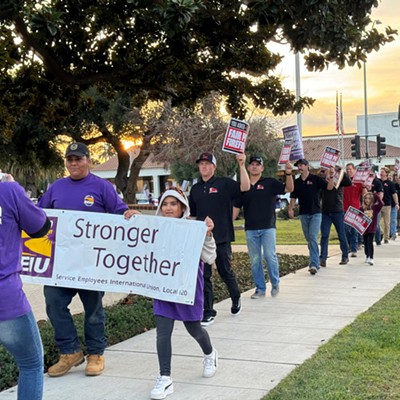Fire chiefs from across Santa Barbara County attended the Nov. 16 Board of Supervisors meeting in support of the regional dispatch center presented by county Fire Chief Mark Hartwig.
“The story that I will talk about here this morning is more about cooperation, partnership, and regionalization as it is about dispatch,” Hartwig said. “This is a culmination of a years-long effort. What I present is the next step—a big step—but the next step in this county.”
The recently approved Regional Fire Communications Facility (RFCF) will create one dedicated center for all fire and medical service-related calls, cut jurisdictions, and give dispatchers fire-related expertise, according to previous Sun reporting.

It will cost about $11 million to construct—a cost shared between county and RFCF partners—the 8,500-square-foot facility, which will have a new communication center, a joint information center (JIC), a data center, and backup servers, Hartwig noted.
“There will be two public safety answering points—PSAPS—a primary and secondary. The sheriff will continue to operate the primary PSAP, and there will be no impact to the sheriff’s ability to operate the primary PSAP, nor would it be negatively affected by loss of space or functionality at the EOC [Emergency Operations Center],” Hartwig said.
Santa Barbara County Sheriff Bill Brown disagreed.
“The Sheriff’s Office strongly opposes the splitting of 911 dispatch services by creating a regional dispatch center to which 911 calls would have to be transferred. All 911 calls related to fire and emergency medical services would have to be transferred,” Brown said.
County emergency services’ 44-year history shows that there’s no need to separate dispatch, Brown said, due to the successful responses to disastrous incidents like the Thomas and Alisal fires, the Refugio oil spill, and the Isla Vista mass shooting.
“Having all three disciplines in the same room and [being] able to communicate with each other directly, face to face—and in real time—prove to be beneficial, and prove to be life saving,” he said.
It currently takes callers 60 seconds to dispatch emergency services at the call center. Brown argued any transfer to the regional dispatch center will cause responses to take twice as long (about 119 seconds).
In response to the sheriff’s comments, Chief Hartwig said transfer delays will occur—which would happen anywhere—and the delay would be about eight seconds. He couldn’t say if the delay would be more harmful than that at a non-regionalized facility.
“This is a very common practice for fire agencies that said, ‘We want to do it better together.’ We are not cutting edge, we are not bleeding edge. Secondary PCAPS are numerous in the state of California, specifically for fire, rescue, and emergency medical service providers,” Hartwig said.
LA County, San Diego County, San Bernardino County, and neighboring Ventura County all follow a regional dispatch model with several agencies involved in each of their corresponding plans, Hartwig said.
Second District Supervisor Gregg Hart appreciated the sheriff’s concern but disagreed with his arguments and promoted the collaboration.
“I think that there have been opportunities to do things differently to collaborate; and those opportunities weren’t taken by the sheriff’s department, but they were taken by the fire agencies,” he said. “That’s why every single fire chief is here today in this room in solidarity with this plan.”
Hart and the rest of the supervisors said they wanted to see this change and believe the dispatch center will benefit county residents as well as allow fire departments to see improvements in response times.
“It’s an opportunity to grasp a regional solution to borderless dispatch in the fastest way possible,” Hart said.









